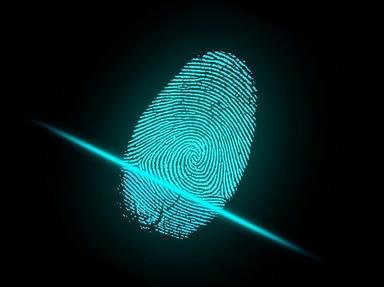Quiz Answer Key and Fun Facts
1. What is studied in forensic entomology?
2. In which year and country was the first case of a conviction based on fingerprint evidence?
3. Which of the following statements is FALSE?
4. In 1981, the greatest fraud in the history of publishing was perpetrated when the German publishing company Gruner and Jahr purchased the so-called "Hitler diaries". Three independent experts declared the diaries to be genuine but it was later revealed to be a hoax. What was the nature of the crucial evidence, discovered by German government scientists, which exposed the fraud?
5. Dactyloscopy refers to the procedure of using which characteristic as a means of identification?
6. One of Australia's most famous and bizarre murder cases is often referred to as the "Shark Arm Murder". In April 1935, a 14-foot tiger shark in a Sydney aquarium suddenly vomited up a human arm in front of a crowd of shocked tourists. The arm was eventually identified as belonging to a known criminal by the name of James Smith. How did the police make the identification?
7. Which of the following substances is often used to develop latent fingerprints?
8. What are Bunter marks?
9. When analysing fibres, which of the following characteristics is the most important?
10. Patricia Cornwell's book "Portrait of a Killer" relates her attempt to apply modern forensic science techniques to solve the mystery of the identity of Jack the Ripper. Who was Jack the Ripper, according to Cornwell?
Source: Author
MotherGoose
This quiz was reviewed by FunTrivia editor
crisw before going online.
Any errors found in FunTrivia content are routinely corrected through our feedback system.


